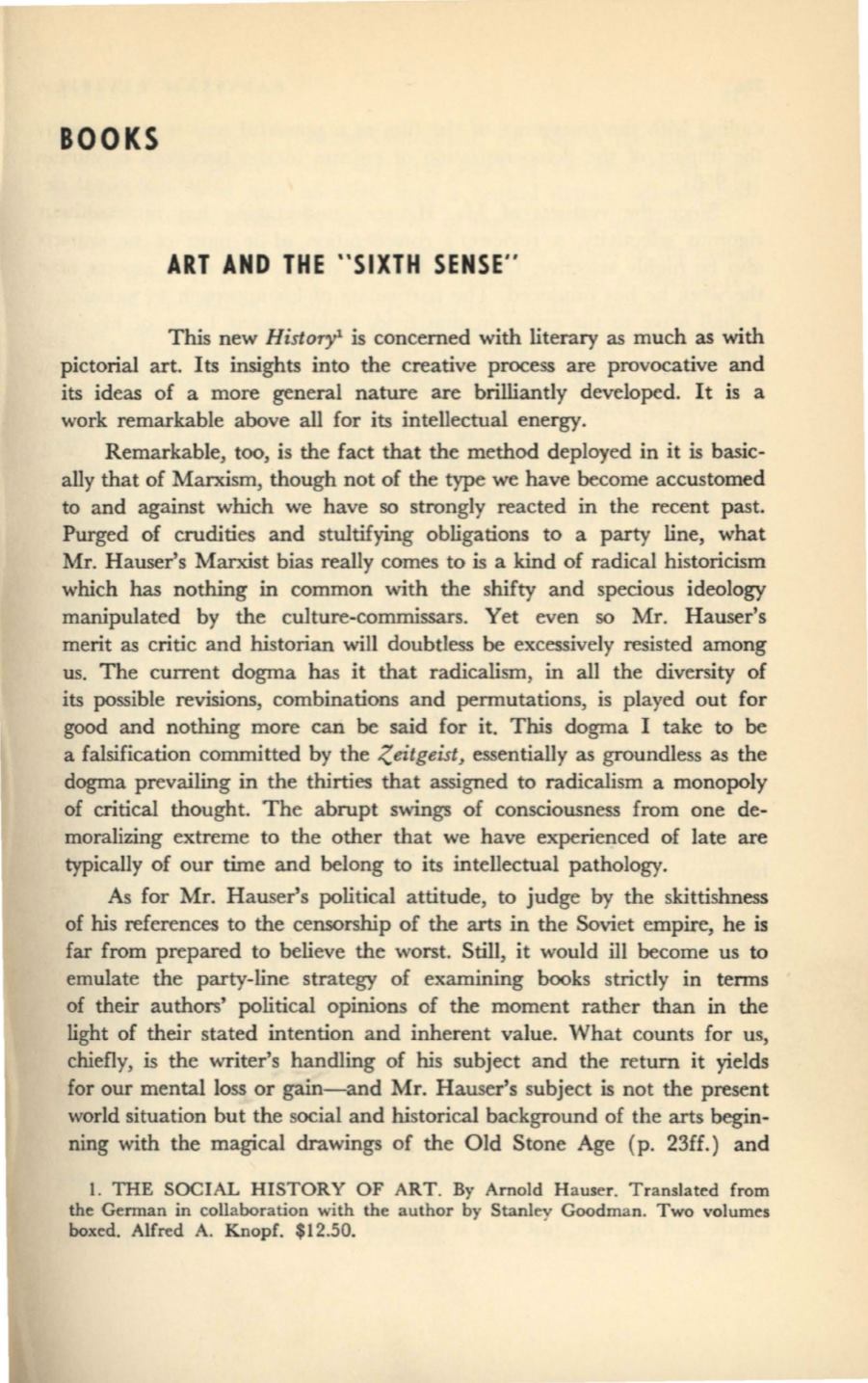
BOOKS
ART AND THE "SIXTH SENSE"
This new
Historyl
is concerned with literary as much as with
pictorial art. Its insights into the creative process are provocative and
its ideas of a more general nature are brilliantly developed.
It
is a
work remarkable above all for its intellectual energy.
Remarkable, too, is the fact that the method deployed in it is basic–
ally that of Marxism, though not of the type we have become accustomed
to and against which we have so strongly reacted in the recent past.
Purged of crudities and stultifying obligations to a party line, what
Mr. Hauser's Marxist bias really comes to is a kind of radical historicism
which has nothing in common with the shifty and specious ideology
manipulated by the culture-commissars. Yet even so Mr. Hauser's
merit as critic and historian will doubtless be excessively resisted among
us. The current dogma has it that radicalism, in all the diversity of
its possible revisions, combinations and permutations, is played out for
good and nothing more can be said for it. This dogma I take to be
a falsification committed by the
Zeitgeist,
essentially as groundless as the
dogma prevailing in the thirties that assigned to radicalism a monopoly
of critical thought. The abrupt swings of consciousness from one de–
moralizing extreme to the other that we have experienced of late are
typically of our time and belong to its intellectual pathology.
As for Mr. Hauser's political attitude, to judge by the skittishness
of his references to the censorship of the arts in the Soviet empire, he is
far from prepared to believe the worst. Still, it would
ill
become us to
emulate the party-line strategy of examining books strictly in terms
of their authors' political opinions of the moment rather than in the
light of their stated intention and inherent value. What counts for us,
chiefly, is the writer's handling of his subject and the return it yields
for our mental loss or gain-and Mr. Hauser's subject is not the present
world situation but the social and historical background of the arts begin–
ning with the magical drawings of the Old Stone Age (p. 23ff.) and
1.
THE SOCIAL HISTORY OF ART. By Arnold H auser. Translated from
the German in collaboration with the author by Stanley Goodman. Two volumes
boxed. Alfred A. Knopf. $12.50.


